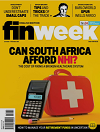Are listed banks still a viable investment option?
As commercial banks report an increase in bad debt and make provisions for further potential impairments, does this mean that listed banks are no longer a viable investment option?

As commercial banks report an increase in bad debt and make provisions for further potential impairments, does this mean that listed banks are no longer a viable investment option?
An important consideration when weighing up the investment viability of different commercial banks is that not all JSE-listed banks are purely South African. Similarly, not all locally listed banks are purely involved in the business of banking. Consider for example, Discovery which has a large insurance and medical aid business, and Sasfin with its large stockbroking and wealth management businesses.
Given that not all South African banks are listed – African Bank comes to mind here – making a comparison between and across South African banks and understanding their respective impairment charges, as well as their specific investment cases, is challenging.
The South African Reserve Bank (SARB) lists 13 locally-controlled banks. The market, however, tends to focus primarily on the traditional big four: Absa, First Rand, Nedbank and Standard Bank, followed by Investec and Capitec. This ranking is particularly unfair to Capitec given its size. According to Bloomberg (figures correct as of 25 September) FirstRand is the largest with a market capitalisation of R220 billion, followed by Standard Bank at R162 billion, Capitec at approximately R107 billion, Absa at R69 billion, Nedbank at R45 billion and Investec at R28 billion.
Current market capitalisations are roughly 40% lower than their 2020, pre-Covid peaks, and around 50-60% lower than their 2018 peaks. Market capitalisation, however, is not the only measure of a bank’s stature relative to its peers. Other measures include its share of total transactional volume.
Another factor complicating comparisons are variances in their reporting schedules. Standard Bank, Nedbank and Absa all have December year ends and recently published their interim results for the first half of 2020. FirstRand’s year end is in June so their most recent report were final results. Capitec reported its interim results for the period ending August 2020 at the end of September. Investec’s year end is March so their first set of interim results will be for the period ending September 2020.
Essentially, what these different periods indicate is that while Absa, Standard Bank, Nedbank and FirstRand can be grouped together to cover the same Covid period, Capitec’s results include extended Covid time while Investec’s interim results will cover a completely different period.
Nedbank, Absa and Capitec’s earnings were all down around 80-90% with Standard Bank an outlier with earnings down just 40-50%. The latter was protected by their African operations and their investment in London-based ICBC which generated profits. Listing regulations require entities to disclose if earnings are likely to be significantly lower than previously communicated ahead of time, so All four banks would have done this and decreases in earnings would have been widely anticipated by the market.
An important change in accounting disclosure has taken place recently which requires banks to provide for expected losses over the upcoming 12 month period versus incurred losses. The current Covid world is the first since the change was implemented when the upcoming 12 month period is likely to be significantly worse – and therefore the first to require meaningful changes in impairment charges.
In a nutshell, there are three key items that need to be kept in mind with regard to accounting disclosure changes: firstly, this is a change in accounting and disclosure standards rather than a change in economic reality. In other words, these accounting losses would ultimately have been experienced regardless of the change in standards. Secondly, it is for the forthcoming 12 month period which implies that if economic conditions remain poor for longer than a year, further impairment charges should be anticipated. Lastly, the disclosure required is based on forecasts which requires assumptions that may – or may not – be accurate.
According to their most recent results FirstRand took the highest impairment charge at 3%, followed by Absa at 2.8%, Nedbank at 1.9% and Standard Bank at 1.7%. In addition, so-called ‘payment holidays’ amounts to 15% of their total debt book; this is unusually high and impairment charges related to this are subject to increased estimation risk.
Local banks have been advised to withhold dividend payments for the foreseeable future. Although this is sensible guidance, it does mean that those banks with stronger capital structures are being treated on the same basis as those who are perhaps less well capitalised.
SARB’s recent Financial Stability report published in May says the banking sector is stable and resilient, despite lower profitability and slightly higher credit losses. It adds that the sector remains profitable and well capitalised although profits are likely to come under pressure in the near term as a result of Covid-19. These comments, however, need to be taken with a pinch of salt given that SARB has a social obligation to maintain confidence in the banking system which would be undone if any bank was singled out over another.
Of interest is the fact that the outstanding debt of the local banking sector trades at a lower yield than that of the equivalent South African government bonds indicating that the market views the domestic banking sector as less risky than the SA government.
In summary, given that the prudential authority, the SARB, has not raised any previously unforeseen concerns; that bank share prices and earnings have already meaningfully adjusted downwards; impairment charges have been taken and have been done with a 12-month view despite the percentage of total book under payment holidays being high – the first tranches of which are only maturing now which means there is very little information to go on; dividends are being withheld to improve capital resiliency (which is a good thing) and the bond market considers the banking sector less risky than the state – the banking sector is certainly still an investable option. Investors would though be well advised to wait until December earnings are published for a clearer picture.
 This article was written exclusively for Finweek and originally appeared in the 22 October 2020 edition. You can buy and download the full edition of the magazine here.
This article was written exclusively for Finweek and originally appeared in the 22 October 2020 edition. You can buy and download the full edition of the magazine here.






.jpg?sfvrsn=3ccd9277_0&size=350)

.png?sfvrsn=38ac0893_0&size=350)

































